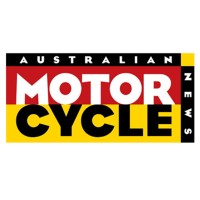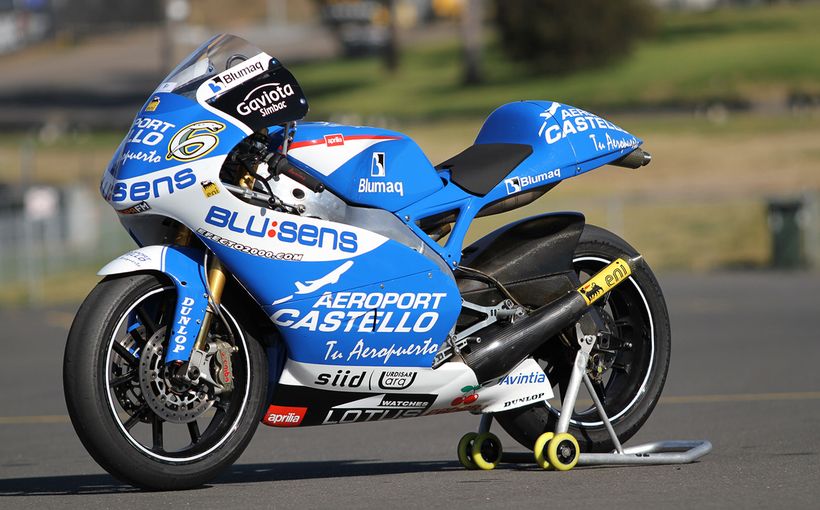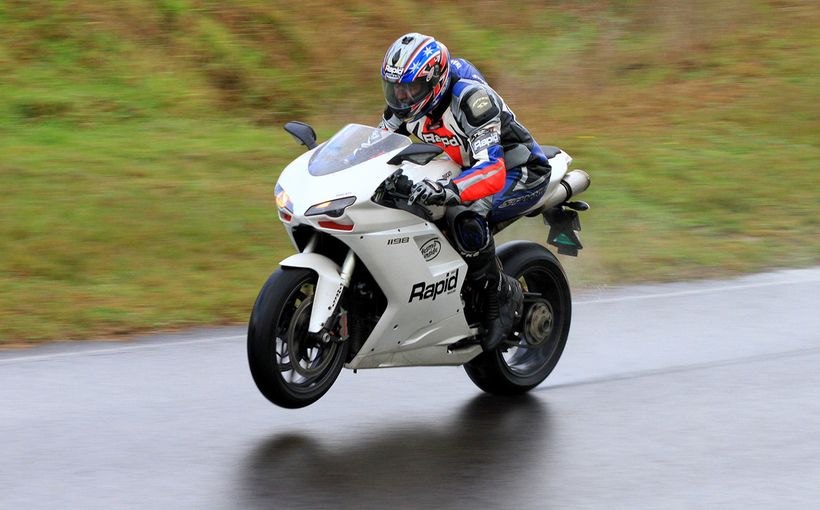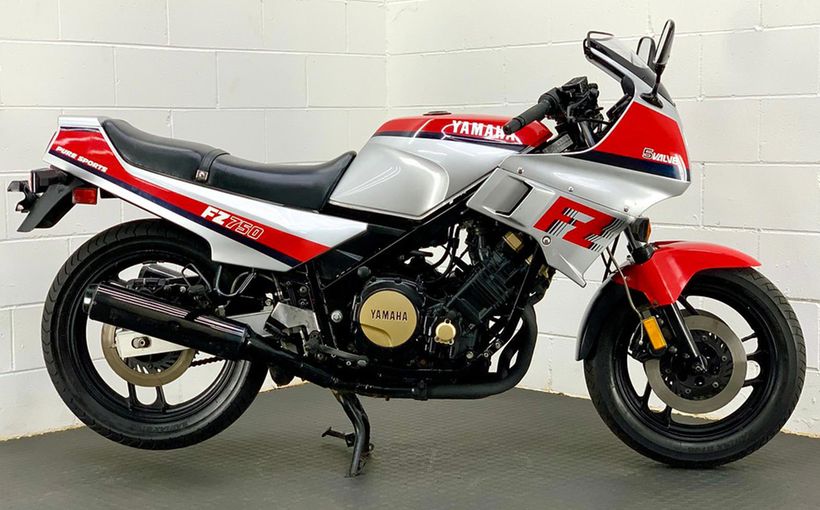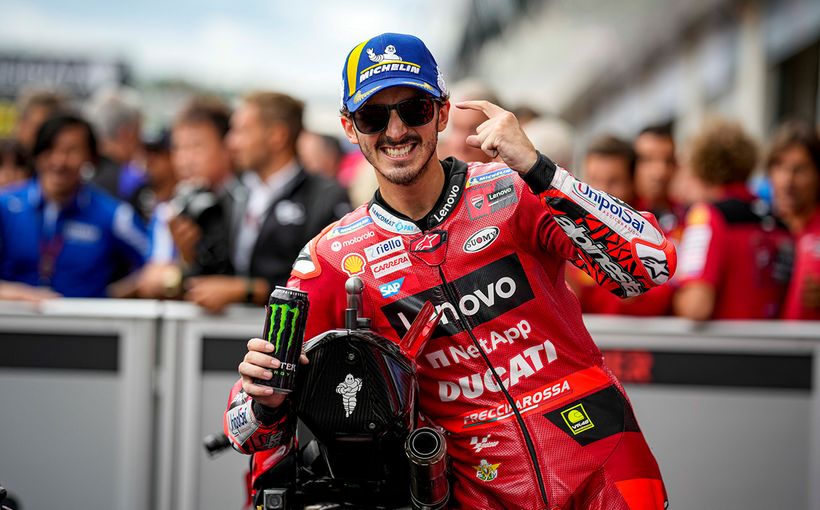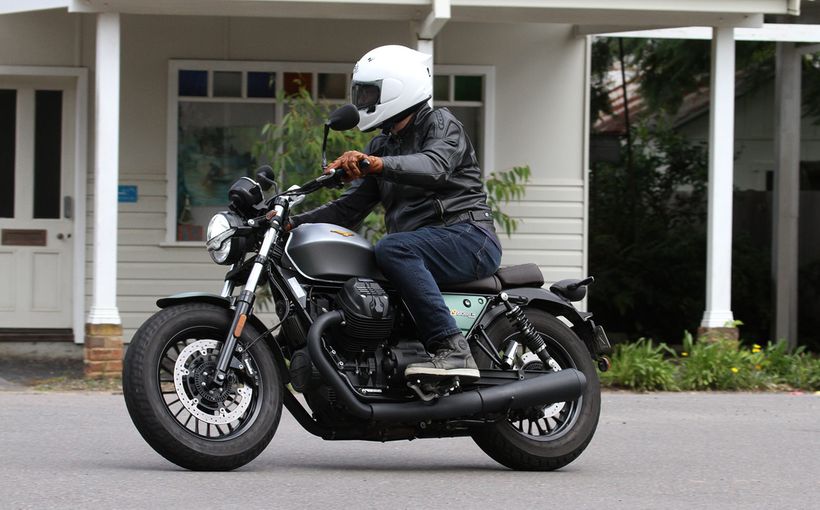
TEST PAUL YOUNG PHOTOGRAPHY KTM
Not unseasonal firestorms, biblical sandstorms, nor pandemaniacal shitstorms could put a stop to KTM going about its business. So in solidarity, and against the overwhelming tide of fleeing international bike journos, I sculled a flagon of hand sanitiser, dug out my old Jofa face mask, got myself wrapped by one of those plastic-film luggage wrappers at the airport and headed for the world launch of KTM’s 390 Adventure.
Except… it wasn’t. That happened a few weeks earlier, curiously, in India. KTM’s development and manufacturing partner Bajaj somehow managed to, unexpectedly it would seem, beat them to the grand reveal with their own local Indian-only press launch. Still, these little miscommunications can happen in any marriage. And on the developmental aspects of the 390 Adventure project at least, everything seems to have been conducted in complete harmony.
I’d been looking forward to riding the firm’s miniature adventure model for some time. Hoping KTM, of all motorcycle companies, wouldn’t dream of diluting the enviable off-road reputation of its Adventure brand. Sadly, but somewhat understandably, BMW has watered down its highly desirable GS badge by slapping it on its G 310 GS offering, let’s just hope BMW responds to the 390 with a far more convincing entry-level machine.

‘Ready to Race’ KTM, on the other hand, wouldn’t dare enter this new adventure-lite market with nothing more than a jazzed-up Duke, would it? This is certainly a 390 Duke derivative, sharing its engine and chassis fundamentals with that most delightfully nutty of small-capacity nakeds. But KTM hasn’t just dressed the Duke up in Dakar duds purely for Toby Price promotional purposes. And it’d be bad timing if they had, since the Dakar crown has just gone from KTM orange to HRC red for the first time since Aramaic roadbooks – although Pricey’s podium was certainly worthy of a victory under the circumstances. Nope, this isn’t a quick cynical cash-in, this is a serious attempt to foster soft-focus adventure riding with a new audience.
By KTM’s own admission, the 390 Adventure is a road-focused travel bike with light off-road capabilities, not a full-blown and rugged rally-replica. I’m not sure this is what KTM at its heart would have wanted to make, given its gritty ethos and reputation, but I suspect it’s the bike that raw economics forced them to make.

To market an adventure bike to a truly global audience for the first time, it had to be as affordable as possible. Building on the 390 Duke platform makes more financial sense than building a new adventure model from the ground up, but it also carries with it some challenges and, ultimately, some compromises which could have been avoided with a clean-sheet, adventure-bike specific design.
The most significant challenge in using the 390 Duke as a base model is the height of the combined engine and chassis. It’s a very tall package for such a small bike. The Duke’s seat height is already on the lofty side for its class, and adding a 19-inch front wheel, high profile tyres and longer-travel suspension can only push the rider in one direction. Up.

At 174cm sans-slouch, I’m barely able to get a toe to ground simultaneously on both sides of the 390 Adventure. It’s not just the 855mm seat height, but also the seat’s width, which adds up to this being a long straddle for an entry-level adventure tourer, or even for the lightweight urban commuter its likely to become more popular as.
For the short-arses and L-platers of this world, there is a lowering kit that reduces suspension travel by 25mm front and rear, and the seat height by the same amount. This seems barely enough to satisfy some would-be owners, and effectively matches both the travel and seat height of the 390 Duke. The cost for the kit, which includes a complete rear shock, internal fork spacers, plus a shorter sidestand, is $548.12 plus around three hours labour cost for installation.
It seems like a missed opportunity for the 390 Adventure not to be offered as a dealer direct option in the low-seat guise. This would fill a gap in the 390 range for riders put off the Duke due to its aggressive ergos and attitude, and also those who want to dabble in adventure riding but are put off by the 390 Adventure’s seat height. Interestingly, in some Asian markets such as the Philippines the lowered suspension version comes factory fitted as that market’s standard model. So it seems a no-brainer to offer it everywhere else, too.

Of course, once rolling, saddle height doesn’t matter a jot and on the road the 390 Adventure offers all the joyous giggle inducing flickability and braapiness of the Duke, but with the added comfort and surety of being sensibly seated within a relaxed reach of the controls. Ignore the Adventure badges, and this could just be the 390 Duke’s amiable alter ego, more suited to life’s daily duties and much kinder to less-than-limber limbs.
Tenerife’s racetrack-smooth mountain roads wind up and around the island’s monolithic central volcano like a lava-strewn playground for petrolheads, with such intensity of curvature it could have been designed by Mr Squiggle in his lesser known opioid-surrealist period. Threading the little KTM between the rapid-fire apexes was like playtime in Lavaland. Light-footed yet surefooted, nimble yet neutral, and above all predictable and progressive. Big bike boofheads may scoff, but until the road opens out leaving the hairpin pinball far behind it’s hard to imagine a faster, more fun way to join Blackboard’s dots.
Keeping the 373cc four-valve single on the boil requires tapping up and down the light but positive-changing six-speed gearbox, chasing the engine’s flow-zone between its 32Nm peak torque at 7000rpm and 9000rpm where its power tops out at 32kW. Although, for a more relaxed approach, rolling the throttle open from 5500rpm will provide a strong enough response to keep a tidy pace.
It wasn’t until 50 kays into the ride that I became conscious of any vibrations. This came primarily through the large, grippy off-road style steel footpegs, which strangely are angled steeply forward. The ’pegs had their vibe-damping rubber infills removed for our test ride, so this shouldn’t be a concern with the rubbers fitted. Bar buzz is fairly minimal for a peppy single-cylinder motor, and the seat is similarly isolated from the vibes.

That seat, though, it has to be said is not quite up to the all-day comfort I’d hope from an all-day bike. It is firm, for sure, but I think it’s more its lack of form which affects comfort. I found the best cure for acute tush ache was more corners and a good scratch. Suddenly, my butt didn’t seem to matter so much. But for a long haul on the highway I think I’d be reaching for my cycling shorts, or perhaps a Powerparts Ergo seat. In fairness to KTM, a firm low-profile seat was necessary to minimise seat height.
Long hauls are definitely on the cards for this pint-sized traveller, too. With its Euro-5 ready engine sipping from a 14.5 litre tank at a miserly 3.37L/100km, a potential range of around 430km will allow for plenty of seamless saddle time should you be up for the challenge.
Owning a suspension manufacturer with the expertise and quality of WP is a big benefit to KTM. This fact is highlighted with every new KTM model I ride, and again is the stand-out feature on the 390 Adventure. The WP Apex suspension may not be the brand’s top-shelf components, but they are still several levels above the 390’s competition. And if there’s one thing a true adventure bike needs, it’s well developed high-quality suspension. This counts for both on- and off-road handling, because long-travel suspension without adequate damping will have you tied in knots on the tarmac, too.

I’ve recently done just over 1000km on the 310 GS and if I rode it at the same clip as I was able to push the KTM , the Beemer would not have coped anywhere near as well.
The Kato was composed and consistent, and with adjustability for rebound and compression damping in the separate-function fork legs, plus rebound and spring preload in the direct-acting shock, there’s also scope for dialling in different rider weights and luggage loads.
Another example for the sometimes unseen importance of good suspension is in a bike’s braking performance and behaviour. The KTM and GS have almost identical braking setups, yet the stopping distances and braking stability of the KTM is far superior due to its damping’s more effective control of chassis pitch and dive. The 390 also boasts cornering ABS, another first in class, with an off-road ABS mode which proved to be appropriately tuned for the loose, tricky trail conditions on enerife. On and off road, I couldn’t have asked more of the ByeBre braking package, front or rear, in terms of bite, power, feel and modulation.

Continental’s proven TKC 70 dual-sport tyres provide adequate if not exceptional grip on the dirt, but have the added advantage of being a superb road-holder with confidence inspiring progression and feedback, better even than a lot of dedicated road rubber. The 130/80-17 rear tyre is matched to a 100/90 19-inch front, and these fairly narrow sizes help give the 390’s chassis its spritely character.
Going to a 140/80, 110/90 combination would have given the 390’s wheels a greater level of off-road impact protection, but would have pushed the seat height even higher. It’s another decision I’m sure the development team must have mulled over at length, and some front wheel dings, including one which deflated the tyre of a local Tinerfeño journalist, suggests this is a limiting factor for off-road raging. I suspect higher tyre pressures may have been wise on the rocky trails we tackled on the launch route.
On the other hand, I managed to leave the ‘fast’ group mostly eating dust, hitting everything at full tilt and gleefully launching off every lip I spotted, yet still managed to return with my bike unscathed. Maybe it was the extra five clicks of compression damping I dialled into the fork; maybe it was catlike line choices and unworldly finesse (cough). But, even so, if I were planning a life of trail torture for my own 390, the first KTM Powerparts accessory on the shopping list would be the spoked wheel set, swiftly followed by a set of TKC 80s and heavy-duty tubes.

Anyone who knows the 390 Duke or RC 390 will know what a smooth and punchy little engine the long-serving 373cc liquid-cooled DOHC unit is. But it has also had its issues in the past with a snatchy throttle response and, in some circumstances, an overwhelmed cooling system. Punt the RC or Duke around inner-city traffic in high-summer temperatures and you’ll be accompanied by the whirring of radiator fan almost non-stop. My experience with the 390 Adventure tells me that, with this bike at least, both these small niggles are no longer a potential annoyance.
It’s easy to see why cooling efficiency has been radically improved. KTM developed a new curved radiator, which increases its surface area without adding width, then fitted two cooling fans as opposed to the Duke’s single unit. This will be a big advantage both for commuting and for off-road riding on tight technical trails.
Software and calibration changes to the bike’s Bosch ECU, plus the addition of a pre-cat to the also new primary catalytic convertor, were necessary to bring KTM’s 390 engine platform up to the latest emissions standards. The revised calibration strategy has softened the initial throttle connection enough to suit the Adventure’s off-road-friendly brief, without taking away too much of the engine’s trademark punchiness. This smoother throttle pick-up makes the Adventure measurably easier to keep momentum on than the RC or Duke.
One of the KTM’s unique selling points is the addition of traction control on a bike of this size for the first time. Not just any old MTC, but lean-angle sensitive MTC. The system has just one setting, plus the option to disable MTC altogether. This can be done on the fly, but because of the amount of button prodding faff involved, plus the fact you have to keep the throttle closed and buttons prodded for an eternity while it resets, and also considering the attention you really should be spending on the road ahead, it’s not an advisable practise. Best just to stop at the start of the dirty bits to switch it off.

And you will want to switch it off if the going is loose or steep. The MTC’s calibration is very much a safety feature for less experienced riders and slippery tarmac. Try to tackle a loose gravelly climb with it on and you will struggle to keep momentum. For the road, though, the 390’s MTC is a useful safety net for learners. Experienced riders will probably want to turn it off when hitting dry open roads, and especially for scratching blacktop hairpins in the hills, something the 390 Adventure excels at.
My experience and suspicion tells me that the lean angle sensitive part of the MTC cares little for whether there is actually any loss of traction, and simply always reduces power output via the ride-by-wire throttle when the bike is leaned over, regardless of how much grip is available. Although this is a valid and effective way of protecting novices from getting ham-fisted at big lean angles – a phenomena that as a race school instructor I’ve been terrified by time and again – it does detract from the fun of reading the road by brail and belting it out of second gear hairpins. However, with the ‘off’ option, that’s not a problem.

Thumbing through the settings menu via the lefthand switch cube is a relatively easy and intuitive task, with the options all displayed on the large TFT dash in a clear, bold fashion. The enormous tablet-like dash looks much more at home on the Adventure than it does on the Duke, the compact yet effective rally-style fairing and screen absorbs the beefy display unit visually, as opposed to it being a preposterous protuberance on the nakedbike.
The rider’s view of the 390 Adventure’s cockpit gives the bike an air of quality and substance new to this market sector, and feels substantial without being over-sized. The touch points and overall attitude of the bike all relay the familiar KTM Adventure feel. And, although this fact may be lost on new riders to the adventure game,
it certainly is a good environment in which to be initiated. It also means that when ready to graduate to the class of 690… 790… 890… or 1290, they will feel right at home.

As well as the non-slip security of aggressively serrated footpegs, the 390’s adventure-ready cred is bolstered by a folding gear lever tip, replaceable serrated toe piece on the rear brake lever and span adjustability on both the front brake and clutch levers. There’s also a GPS mounting point front and centre above the dash, perfectly placed for rapid route reconnaissance.
Sure, there’s been some compromise for the cost savings afforded by developing on the same platform as the 390 Duke. But it’s made up for by thoughtful detailing and some technology currently only available in the orange camp. KTM’s ‘global’ adventure bike may not be perfect, but it is the most capable, best equipped, highest quality, and most engaging motorcycle in its class, and by some distance.
Something tells me that the lightweight adventure bike market is just getting warmed up, and I can’t wait to see some new protagonists break cover in the coming years.
Go light and go long, with less weight and more adventure!

SPECS
ENGINE
Capacity 373.2cc
Type Single-cylinder, DOHC, 4 valves
Bore & stroke 89 x 60mm Compression ratio 12.6:1 Cooling Liquid
Fueling Bosch ride-by-wire EFI, 46mm throttle body Transmission Six-speed Clutch Wet, multi-plate, slipper Final drive Chain
PERFORMANCE
Power 32kW @ 9000rpm (claimed)
Torque 37Nm @ 7000rpm (claimed)
Top speed 160km/h (est)
Fuel consumption 3.37L/100km (claimed)
ELECTRONICS
Type Bosch
Rider aides Cornering ABS, MTC Cornering Traction Control
Modes Off-road ABS, switchable MTC
CHASSIS
Frame material Steel
Frame type Trellis
Rake 26.5 degrees
Trail 98mm
Wheelbase 1430mm
SUSPENSION
Type WP Apex
Front: 43mm USD fork, adjustable compression and rebound, 170mm travel
Rear: Direct acting monoshock, adjustable rebound and preload, 177mm travel
WHEELS & BRAKES
Wheels Cast aluminium
Front: 19 x 2.5 Rear: 17 x 3.5 Tyres Continental TKC 70
Front: 100/90-19 (57T)
Rear: 130/80-17 (65T)
Brakes Bosch 9.1MP two-channel Cornering ABS with off-road mode
Front: Single 320mm disc, four-piston radial caliper
Rear: Single 230mm disc, single-piston caliper
DIMENSIONS
Weight 158kg (dry, claimed) Seat height 855mm
Width Not given
Height Not given
Length Not given
Ground clearance 200mm
Fuel capacity 14.5L
SERVICING & WARRANTY
Servicing First: 1000km Subsequent: 7500km
Warranty 2 years, unlimited km
BUSINESS END
Price $8995 (ride away)
Colour options Orange, White
Contact ktm.com


